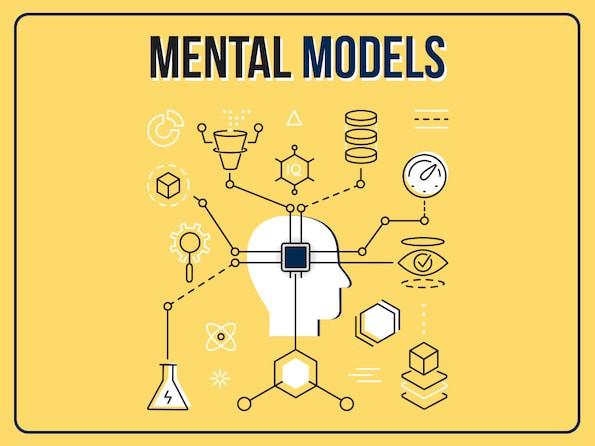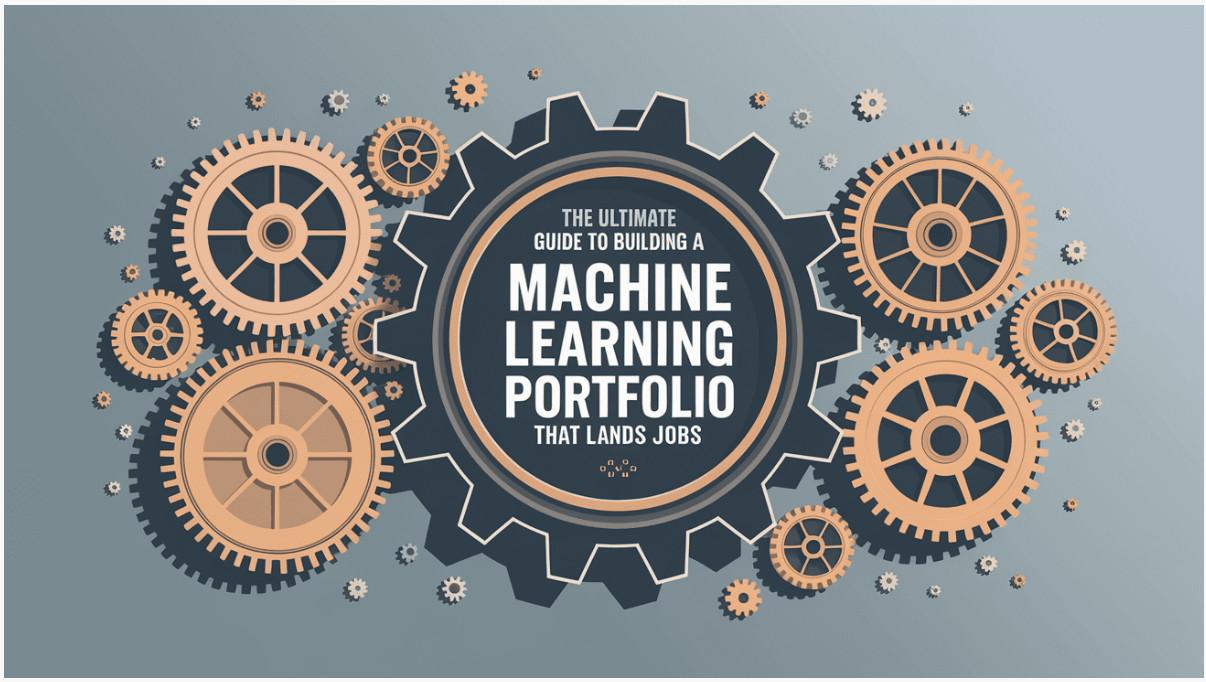Introduction - The Hidden Variable That Shapes Every ML Interview
You can master every model architecture, understand every trade-off in system design, and still walk out of an ML interview wondering why your performance didn’t match your preparation.
The truth is, interviews aren’t purely technical events, they’re neurological ones.
Confidence, that elusive quality interviewers often “feel,” is not luck, personality, or charisma. It’s a physiological state, an alignment of brain chemistry, emotional regulation, and working memory that allows your prefrontal cortex (your logical control center) to stay online under social pressure.
In an interview setting, your brain performs a balancing act.
- On one side sits your prefrontal cortex, responsible for reasoning, recall, and structured problem-solving.
- On the other side, your amygdala, the brain’s threat detector, monitors for risk and rejection.
When you perceive the interview as a threat, a test of identity rather than a challenge of skill, your amygdala triggers a fight-or-flight response.
Cortisol floods your system, your heart rate spikes, and your focus narrows.
In neuroscience, this is known as amygdala hijack, your body’s survival system overpowering your reasoning brain.
That’s why, even if you know the answer, you can forget it. Your neural resources are redirected to survival, not logic.
Confidence, then, isn’t about pretending you’re calm, it’s about training your brain to stay regulated in uncertainty.
Just like you optimize a model’s hyperparameters for stability, you can optimize your neural responses for composure.
In this blog, we’ll explore exactly how:
- What’s happening inside your brain during interviews.
- Why some stress improves performance while other stress destroys it.
- How to reframe, retrain, and recondition your neural state for confidence.
- And how to recover when things go wrong, scientifically.
Check out Interview Node’s guide “The Psychology of Interviews: Why Confidence Often Beats Perfect Answers”
Section 1: What Happens in Your Brain During an Interview
Imagine you’re sitting in a Zoom interview.
The recruiter asks you to design an ML pipeline for anomaly detection.
You know this topic cold, you’ve done similar work before, yet your mind goes blank.
This moment isn’t cognitive failure; it’s neural misallocation.
When you experience perceived social threat (judgment, rejection, or uncertainty), your brain activates the limbic system, the emotional control center. The amygdala releases stress hormones like cortisol and adrenaline, prepping your body to escape danger.
This response was great when humans faced predators, not so much when you’re facing a hiring manager.
Here’s the critical problem: the same stress response that sharpens reflexes in physical danger blunts cognitive reasoning in intellectual ones.
Cortisol constricts neural pathways to the prefrontal cortex, the part of your brain responsible for:
- Working memory
- Abstraction and problem-solving
- Verbal articulation
Essentially, stress cuts off the brain regions you need most in an interview.
That’s why you suddenly can’t recall how batch normalization works, not because you forgot, but because your brain temporarily reallocated energy toward emotional defense.
The Confidence Equation
Confidence = (Prefrontal Activation) ÷ (Amygdala Activation)
When the denominator (fear) spikes, the numerator (logic) collapses.
The good news? This ratio is trainable.
By managing stress, controlling breathing, and reframing how you perceive evaluation, you can literally rewire the brain to stay in “cognitive control mode” longer.
Neuroscientists call this “top-down regulation.” It’s what elite performers, athletes, musicians, public speakers, master unconsciously.
They don’t suppress nerves; they integrate them.
Section 2: Reframing Stress - From Threat to Challenge
For decades, people believed that stress was the enemy of performance.
But modern neuroscience tells a more nuanced story.
In 2016, Stanford psychologist Alia Crum discovered that how you interpret stress determines whether it helps or harms you.
In her “stress mindset” experiments, participants who were told stress was helpful (an energy signal, not a warning) performed better on cognitive tests and had lower cortisol levels.
In other words, stress itself isn’t the problem, it’s the meaning you attach to it.
When you feel anxiety before an interview, your heart rate increases, your breathing quickens, and your body produces adrenaline.
Most people label this as panic.
High performers label it as activation.
“This isn’t fear, this is my body preparing to perform.”
This single mental shift reprograms the amygdala’s feedback loop.
Instead of interpreting activation as threat, the brain reclassifies it as readiness.
Your prefrontal cortex stays online longer, preserving working memory and verbal clarity.
How to Practice This Reframe
- Name the feeling, not the fear.
When you sense anxiety, say out loud: “This is energy, not danger.” - Channel the signal.
Channel that physiological surge into your tone and articulation, use it to project enthusiasm and focus. - Pair with controlled breathing.
Deep exhalations extend parasympathetic control (the system that signals safety).
This reframing doesn’t remove pressure, it changes your brain’s interpretation of it.
You can’t eliminate stress from ML interviews, but you can train your neural systems to treat it as fuel. Check out Interview Node’s guide “The Psychology of Interviews: Why Confidence Often Beats Perfect Answers”
Section 3: Training Cognitive Control - The Prefrontal Advantage
Your prefrontal cortex (PFC) is your brain’s executive control hub, it decides what you pay attention to, what you recall, and how coherently you respond.
Unfortunately, it’s also the first region to go offline when stress spikes.
Neuroscience-backed confidence training focuses on strengthening the PFC’s ability to regulate the amygdala.
Here are three proven methods:
a. Focused Breathing (The Parasympathetic Reset)
When you extend your exhale longer than your inhale (e.g., in 4 seconds, out 6 seconds), you activate the vagus nerve, which lowers heart rate and signals the brain that you’re safe.
This allows the PFC to reclaim control from the amygdala, the biological foundation of composure.
b. Visualization (Mental Simulation Training)
fMRI studies show that imagined performance activates 80–90% of the same neural networks as real practice.
When you visualize yourself walking into an ML interview, greeting confidently, and explaining system design smoothly, you desensitize your amygdala.
The brain begins to recognize the scenario as familiar, not threatening.
c. Cognitive Labeling
When you feel panic rising (“I’ll mess up again”), say to yourself, “That’s a worry thought.”
By naming the emotion, you move processing from the limbic system to the PFC, restoring reasoning over reaction.
Together, these tools retrain your neural circuit to recognize interviews as “safe challenges,” not threats.
That’s how confidence becomes a trained reflex, not an accident. Check out Interview Node’s guide “Mock Interview Framework: How to Practice Like You’re Already in the Room”
Section 4: How Confidence Shapes Communication in ML Interviews
Confidence doesn’t live only in your head, it radiates through how you communicate.
Even if you’ve mastered the technical content, what ultimately convinces interviewers of your competence is the clarity, pacing, and tone of your communication.
And neuroscience has a lot to say about why.
a. Mirror Neurons: How Your Calm Becomes Contagious
Human brains are wired for social synchronization through what are called mirror neurons, neural circuits that fire both when we act and when we observe someone else acting.
This means your interviewer’s brain partially mirrors your state.
If you speak calmly, they feel calm.
If you appear confident and grounded, their brain subconsciously tags you as credible and competent.
That’s why confident communication doesn’t just make you look better, it makes others feel safer around you.
In team-driven environments like ML engineering, that’s invaluable.
Conversely, rushed speech, defensive tone, or erratic pacing trigger micro-signals of tension that can prime the listener’s own stress response.
In other words, your anxiety becomes contagious.
That’s why confident communication starts not with what you say, but with how you breathe before you speak.
b. The Power of Pausing: Reclaiming Cognitive Bandwidth
One of the most underused techniques in technical interviews is the intentional pause.
Most candidates rush to fill silence, afraid it signals incompetence.
But neuroscience tells us something different:
Silence is a signal of prefrontal activation, your brain’s way of processing information deeply before speaking.
In fact, slow, deliberate speakers are often rated as more competent and composed.
A 2018 study in the Journal of Nonverbal Behavior found that measured pacing increases perceived confidence and leadership ratings, even when content is identical.
When you pause before answering, two things happen neurologically:
- Your prefrontal cortex gets time to retrieve complex ideas from memory.
- Your interviewer’s mirror neurons mirror your calm processing rhythm, creating rapport.
Try this simple pattern in ML interviews:
Pause → Frame → Answer → Summarize
Example:
“That’s a great question, I’d start by clarifying whether we’re optimizing for inference speed or model accuracy. Once that’s clear, the architecture design becomes straightforward.”
That one-second pause transforms your response from reactive to reflective.
c. Reframing Errors as Evidence of Thoughtfulness
Every interviewer knows mistakes happen, even experts misremember API calls or feature scaling details.
Confidence is not the absence of errors; it’s the presence of composure when errors occur.
Neuroscientifically, when you respond defensively to mistakes, your amygdala re-triggers the threat loop.
But if you frame errors as learning data, your anterior cingulate cortex (ACC) activates, a region linked to cognitive flexibility and adaptive problem-solving.
Try saying:
“You’re right, I missed that assumption. That changes how I’d handle the model retraining frequency. Good catch.”
You just demonstrated humility, adaptability, and cognitive resilience, three traits every ML hiring panel scores highly.
d. Verbal Structure Reflects Neural Structure
Your communication structure reflects your mental structure.
When you ramble, it’s not just disorganization, it’s a symptom of a flooded prefrontal cortex.
Train yourself to communicate in chunked frameworks, e.g., “three-step answers.”
This technique reduces cognitive load and improves both memory and clarity.
Example for a system design question:
“I’d structure this system in three layers, data ingestion, model training, and inference serving. Let me break down each layer briefly.”
This structure gives your working memory a predictable loop, preventing neural overload under stress.
It also helps your interviewer track your logic, turning your explanation into a shared cognitive map.
e. Confidence Through Listening
Confidence is not about dominating airtime, it’s about owning the flow.
Neuroscience shows that active listening increases oxytocin, the bonding hormone, in both speaker and listener.
That chemical synchrony translates into trust.
So when you pause to listen, nod, or rephrase the interviewer’s question (“So you’re asking if we’d use a feature store to decouple retraining?”), you’re not being passive, you’re regulating the social neural circuit.
The result? The interviewer feels seen, understood, and aligned, and that’s half the interview won already. Check out Interview Node’s guide “Behavioral ML Interviews: How to Showcase Impact Beyond Just Code”
Key Takeaway
Confidence in communication is not loudness, it’s neural steadiness.
Every pause, every reframe, every deep breath tells your interviewer, “My prefrontal cortex is in charge.”
And when you speak from that state, your calm becomes their calm, and your competence becomes self-evident.
Section 5: Rebuilding Confidence After Failure - A Neuroplasticity Perspective
Every engineer who’s gone through multiple ML interviews knows this feeling —
you open the rejection email, your stomach drops, and a single thought loops endlessly:
“I should’ve done better.”
But here’s what neuroscience tells us: failure doesn’t mean your brain isn’t capable, it means it’s rewiring.
Your neural circuits are constantly adapting. Every mistake, every awkward pause, every missed signal in an interview activates your brain’s neuroplasticity mechanisms, its ability to reorganize connections based on experience.
If you process that failure correctly, your brain literally grows stronger for the next round.
If you process it incorrectly (through rumination or shame), you reinforce stress pathways that make future performance harder.
The difference between candidates who improve rapidly and those who stagnate is not raw intelligence, it’s how they metabolize failure neurologically.
a. What Happens in the Brain After Failure
When you receive negative feedback, your amygdala and anterior insula fire rapidly, triggering emotional pain similar to physical injury.
At the same time, your prefrontal cortex (PFC) tries to make sense of the situation.
If the emotional signal dominates, you enter rumination:
- “I always mess up system design questions.”
- “They probably didn’t like me.”
This strengthens the default mode network (DMN), the brain region associated with self-focused negative thought.
But if you switch into reflective mode, the anterior cingulate cortex (ACC), your brain’s “error correction” hub, lights up.
The ACC helps you analyze what went wrong, reframe the event as data, and encode better future responses.
This is neuroplasticity in motion: reflection converts emotion into adaptation.
b. Turning Rejection Into a Neural Feedback Loop
Think of every interview as a training iteration for your cognitive model.
Failure isn’t a dead end, it’s an input for gradient descent.
When you reflect consciously, you’re effectively running backpropagation on your own behavior:
- The loss function is your discomfort.
- The gradients are the insights you extract.
- The updated weights are your improved habits and responses.
Example:
If you froze when asked to explain feature drift mitigation, your neural system just hit an edge case.
By revisiting the scenario calmly, you’re not “replaying failure”, you’re teaching your neurons how to handle similar stress next time.
Over time, this process builds what neuroscientists call emotional myelination, the strengthening of neural pathways that maintain composure under pressure.
That’s how confidence compounds biologically.
c. Reflection Framework: The 3R Method
Use this post-interview protocol to convert disappointment into growth:
- Reconstruct, Write down the interview sequence factually, without emotion.
“They asked about model monitoring; I missed explaining data drift.”
- Reinterpret, Identify what the question was testing.
“It wasn’t about drift detection, it was about operational awareness.”
- Rewire, Commit one action item for next time.
“I’ll prepare a 2-minute summary on post-deployment ML monitoring.”
Each reflection re-engages your prefrontal learning circuits, reducing emotional reactivity over time.
d. The Neuroscience of Resilience
Resilience isn’t personality, it’s repetition.
When you repeatedly recover from small failures, your dopaminergic system learns to associate discomfort with progress.
That’s why experienced engineers seem “unshakable.”
They’ve conditioned their brains to interpret failure not as rejection, but as recalibration.
Each recovery builds prediction error tolerance, the same mechanism that makes ML models robust to noise.
In other words, the more you fail reflectively, the more stable your internal architecture becomes. Check out Interview Node’s guide “The Psychology of Interviews: Why Confidence Often Beats Perfect Answers”
e. How to Talk About Failure in Future Interviews
Ironically, interviewers love hearing about well-analyzed failures.
Why? Because it signals metacognition, awareness of your own thought processes.
Instead of saying:
“That project didn’t go well.”
Say:
“In that project, our model underperformed because we misjudged data quality.
I learned to integrate earlier checks with the data engineering team, which improved performance by 15% in the next cycle.”
This answer activates the trust circuit in your interviewer’s brain.
You’ve demonstrated growth, accountability, and stability, neural and professional.
Key Takeaway
Confidence after failure isn’t about optimism, it’s about neuroplastic integration.
Your brain learns by error correction, not by perfection.
So every rejection email, every shaky system design round, is not a setback, it’s a synaptic update.
Handled correctly, failure becomes the most powerful data source for your professional growth.
You’re not rebuilding confidence, you’re rewiring it.
Section 6: Behavioral Conditioning for Interview Confidence
Most engineers try to “think” their way into confidence.
They tell themselves to relax, stay calm, and “just do better next time.”
But the brain doesn’t respond to logic alone, it responds to conditioning.
Confidence is not a thought; it’s a trained physiological pattern, a sequence of neural activations that become automatic through repetition.
Just like you train a model with labeled data until it generalizes, you can train your nervous system with structured experiences until calmness becomes your default output.
This is where behavioral conditioning, a neuroscience-backed training method, comes in.
a. How Confidence Conditioning Works in the Brain
Every time you face a stressor (like an ML interview), your brain encodes a memory, not just of what happened, but of how your body responded.
This is stored as a state association between the external trigger (the interview) and your internal response (anxiety or calm).
If repeated experiences of “interview = anxiety” go unchallenged, your amygdala strengthens that association through Hebbian learning:
“Neurons that fire together, wire together.”
That’s why the more you fear interviews, the stronger that fear becomes.
But here’s the good news, the same mechanism can be reversed.
Through exposure conditioning, you can teach your brain to associate interviews with composure instead.
This is called extinction learning, the process of breaking an old fear link by forming a stronger safety link.
b. The Confidence Conditioning Loop
Let’s break this down into a repeatable framework ML engineers can use.
| Step | Goal | Neuroscience Mechanism | Example |
| Exposure | Gradually face the stressor | Amygdala desensitization | Start with mock interviews, not real ones |
| Feedback | Reflect on results | Anterior cingulate activation | Note what improved, not what failed |
| Reward | Reinforce composure | Dopaminergic reinforcement | Reward yourself after each attempt |
| Iteration | Repeat consistently | Myelination of calm response | Weekly practice until it feels normal |
Each cycle literally remaps neural associations between “interview” and “threat.”
Over time, the body learns:
“This situation isn’t dangerous. I’ve done this before, and I survived.”
Confidence becomes conditioned familiarity, not bravado.
c. How to Build a Confidence Training Routine
Let’s turn this into a practical six-week program you can follow.
Week 1–2: Safe Rehearsal
- Record yourself answering basic ML questions.
- Watch with curiosity, not criticism.
- Identify small adjustments, pacing, posture, clarity.
This builds metacognitive awareness, your ability to observe yourself calmly.
Week 3–4: Controlled Stress Exposure
- Do mock interviews with peers or online platforms.
- Simulate real pressure (timers, unpredictable questions).
- Practice recovery, when you blank out, breathe, reframe, continue.
This strengthens amygdala regulation and teaches your body to handle real stress.
Week 5–6: Realistic Simulation
- Schedule back-to-back practice sessions.
- Record live coding rounds or whiteboard sessions.
- Focus on maintaining tone and calm during mistakes.
This creates resilience conditioning, your brain learns to stay composed even under chaos.
By the end of this cycle, your physiological responses to interviews will have changed.
Your prefrontal cortex will stay more active; your amygdala will trigger less.
You’ll feel the difference, not just think it.
d. Reinforcement Through Reward
The human brain doesn’t just learn through correction, it learns faster through reward.
Each time you complete a mock round or handle stress better than last time, you should celebrate it.
Why?
Because rewards trigger dopamine release, which strengthens the neural pathways associated with that behavior.
If you only focus on failure, your brain encodes avoidance.
If you acknowledge success, your brain encodes repetition.
Here’s a simple rule:
After every practice session, log one specific thing you did well, no matter how small.
That’s how you create positive reinforcement loops for composure.
e. The Science of Environmental Conditioning
Your surroundings also influence neural conditioning.
If you always practice in the same quiet room but interview in a noisy environment, your brain may struggle to generalize calmness.
To fix that, vary your context during practice:
- Try different rooms, times, or setups.
- Simulate distractions (notifications, interruptions).
- Even wear your interview clothes, it creates contextual familiarity.
You’re training your nervous system to associate calm not with a location, but with you.
That’s what elite performers do, they’re calm not because the environment is stable, but because their internal state is stable across environments. Check out Interview Node’s guide “Behavioral ML Interviews: How to Showcase Impact Beyond Just Code”
Key Takeaway
Confidence is a conditioned neural habit, not a gift.
Every mock round, every small recovery, every reflection is part of your training loop.
By systematically rewiring your threat response, you don’t just become better at interviews, you become a more regulated, focused engineer under any form of stress.
The more you train composure, the more your brain learns to output it automatically.
That’s the real secret: confidence is reproducible.
Section 7: Conclusion - Train Your Brain, Not Just Your Code
In every ML interview, you’re not just evaluated on what you know —
you’re evaluated on how effectively you can access that knowledge under pressure.
Confidence, then, is not luck.
It’s neurobiology.
It’s the capacity of your prefrontal cortex to stay active while your amygdala stays quiet.
It’s your ability to label stress as energy, not fear.
It’s the result of repetition, reward, and reflection, not genetics or personality.
Modern neuroscience makes one thing clear:
You can train confidence the same way you train a model.
Each interview, each mock session, and each failure feeds new data into your nervous system.
When you pair that data with reflection and composure, your brain literally rewires itself to become more stable, more expressive, and more adaptive.
So the next time your heart races before an interview, remember:
That’s not weakness, that’s activation.
It’s your system preparing to perform.
And the most powerful thing you can do in that moment isn’t to fight your nerves —
it’s to breathe, label, and lean in.
Because the engineers who thrive in ML interviews aren’t the ones who know the most.
They’re the ones whose brains are trained for clarity under uncertainty.
FAQs - Building Confidence for ML Interviews
1. What causes loss of confidence during ML interviews?
Loss of confidence happens when the brain’s amygdala perceives the interview as a social threat.
This shifts blood flow away from your prefrontal cortex, impairing recall and logical reasoning.
It’s not a knowledge issue; it’s a state-management issue.
2. Can confidence really be trained scientifically?
Yes. Neuroplasticity, the brain’s ability to rewire, allows confidence to be built through repeated exposure, reframing, and behavioral conditioning.
Consistent mock interviews and controlled stress exposure literally strengthen neural circuits of composure.
3. How does breathing help me stay calm?
Deep, controlled breathing activates the vagus nerve, which lowers heart rate and suppresses cortisol.
This re-engages your prefrontal cortex, the part of the brain that handles reasoning and communication, allowing you to think clearly under pressure.
4. Why do I forget things I know well during interviews?
When stress spikes, your hippocampus, the brain’s memory index, reduces activity.
This makes recall harder, even for familiar topics.
Calming your nervous system restores hippocampal access, so practice deep breathing and pauses before answering.
5. How do I rebuild confidence after multiple rejections?
Treat each failed interview like a data point, not a verdict.
Write down what was tested, what failed, and what improved.
This engages your brain’s anterior cingulate cortex (ACC), the learning center, turning disappointment into adaptation.
6. Can stress actually improve my performance?
Yes, in moderation.
Short-term stress releases adrenaline, which sharpens focus and alertness.
The trick is to interpret this activation as readiness rather than fear, a cognitive reframe known as stress optimization.
7. How can I sound more confident when speaking?
Practice pacing and pausing.
Your brain interprets rushed speech as danger and calm pacing as control.
Pauses give your prefrontal cortex time to retrieve words, creating an impression of deliberate confidence.
8. How do I train for virtual interviews without feeling awkward?
Record yourself on camera regularly.
Your discomfort is caused by a mismatch between self-perception and visual feedback.
Repeated exposure creates neural familiarity, helping your brain recognize your on-screen self as “safe.”
9. What’s the best pre-interview confidence routine?
Try this 90-second reset:
- Exhale twice to reset your vagus nerve.
- Roll your shoulders and unclench your jaw.
- Say aloud: “This is collaboration, not performance.”
This reframes the brain’s safety perception and reactivates the prefrontal cortex.
10. How long does it take to retrain confidence?
Neuroscientists estimate 4–6 weeks of consistent behavioral conditioning (mock interviews, reflection, journaling) can start to rewire stress responses.
The key is frequency, not duration, daily exposure accelerates the adaptation.
11. What if I’m naturally introverted - can I still appear confident?
Absolutely.
Introverts often excel in interviews once they control their physiology.
You don’t need to be loud, you need to be clear, structured, and calm.
Confidence is about presence, not personality.
12. Final tip - how do I enter an ML interview in “neural flow”?
Before starting, close your eyes, inhale slowly, and visualize success vividly.
That mental imagery activates your motor and cognitive circuits just like real performance.
When you open your eyes, your brain already believes it’s in progress, not in danger.
Final Thought
Confidence isn’t a personality trait, it’s a neural skill.
Every ML interview is an opportunity to train your brain toward composure, clarity, and connection.
When you manage your physiology, you control your cognition.
And when you control your cognition, you unlock everything you already know.
So stop waiting to feel confident, start training it.






